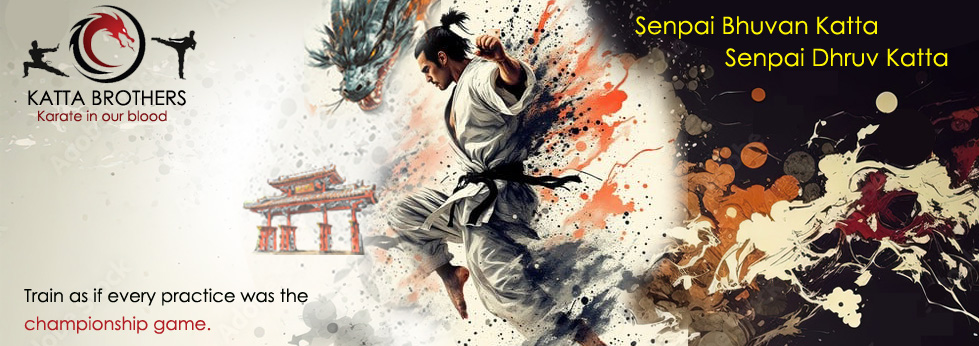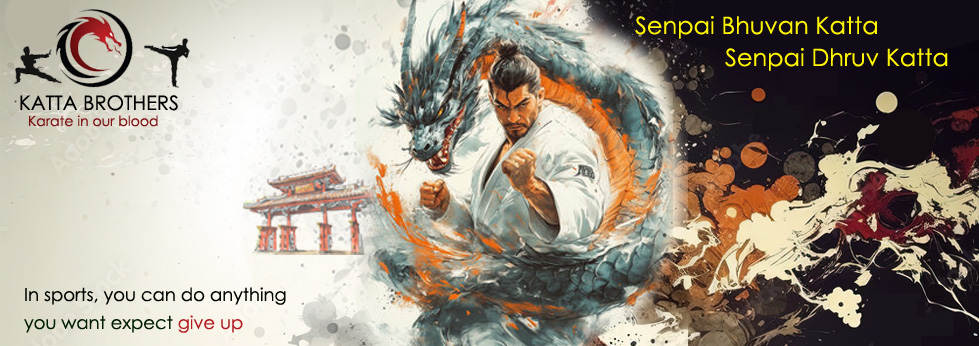HISTORY OF KARATE
According to ancient Okinawan legend, Karate had its beginnings in India with a Buddhist monk named Daruma. Tradition says that Daruma traveled across the Himalayan Mountains from India to the Shaolin Temple in Honan Province of China. There he began teaching the other monks his philosophies of physical and mental conditioning. Legend has it that his teachings included exercises for maintaining physical strength and self defense.This same monk known as Bodhidharma in India and as Ta Mo in China, is credited with founding the school of Buddhist philosophy known as "Ch´an" in China and as "Zen" in Japan.The Okinawans believe that the art known as Karate today came from those original teachings of Daruma through an Okinawan who visited or lived for some time in China at the Shaolin Temple. Whether or not this is true, it is obvious that there are similarities in the Okinawan art of Karate and the language and martial arts of China.Further, we must assume that the Karate of Okinawa developed from trial and error of fighting experiences into a different and unique martial art.

Karate ( 空手 ) is a martial art developed in the in what is now Okinawa, Japan. It was developed from indigenous fighting methods called te ( 手 , literally "hand"; Tii in Okinawan) and Chinese kenpō.Karate is a striking art using punching, kicking, knee and elbow strikes, and open-handed techniques such as knife-hands. Grappling, locks, restraints, throws, and vital point strikes are taught in some styles.A karate practitioner is called a karateka (空手家 ).
Karate was developed in the Ryukyu Kingdom prior to its 19th-century annexation by Japan. It was brought to the Japanese mainland in the early 20th century during a time of cultural exchanges between the Japanese and the Ryukyuans. In 1922 the Japanese Ministry of Education invited Gichin Funakoshi to Tokyo to give a karate demonstration. In 1924 Keio University established the first university karate club in Japan and by 1932, major Japanese universities had karate clubs.In this era of escalating Japanese militarism,the name was changed from 唐手 ("Chinese hand") to 空手 ("empty hand") – both of which are pronounced karate – to indicate that the Japanese wished to develop the combat form in Japanese style.After the Second World War, Okinawa became an important United States military site and karate became popular among servicemen stationed there.
The martial arts movies of the 1960s and 1970s served to greatly increase its popularity and the word karate began to be used in a generic way to refer to all striking-based Oriental martial arts. Karate schools began appearing across the world, catering to those with casual interest as well as those seeking a deeper study of the art.
Choshin Chibana (知花 朝信) was an Okinawan martial artist who developed Shorin-ryu (小林流), a karate based on what he had learned from Anko Itosu. In 1928, Chibana Choshin was born on June 5th, 1885 in Shuri. Choshin began his study of martial arts when he was 15 years old. He was the first to establish a Japanese ryu-ha name for an Okinawan Karate style. He taught Karate at the Shuri Police Academy. In 1956, he became the President of the Okinawa Karate Federation. Chibana had received the title of Hanshi (High Master) from the Dai Nippon Butokukai. In 1960, he received the First Sports Award for his overall accomplishments in the study and practice of traditional Okinawan Karate-do.
Okinawan, Japan Karate Pioneers
- Chojun Miyagi (宮城 長順) - Founder of Goju-ryu(剛柔流) Karate
- Kenwa Mabuni(摩文仁 賢和) - Founder of Shito-ryu(糸東流)
- Anko Itosu (糸州 安恒) - considered by many the father of modern karate
- Sokon Matsumura (松村 宗棍) - Founder of karate styles, for example, Shorin-ryu, Shotokan, and Shito-ryu.
- Gichin Funakoshi (船越 義珍) - Founder of Shotokan Karate (松涛館)
- Choshin Chibana (知花 朝信) - Founder Okinawan martial artist who developed Shorin-ryu (小林流)
- Chotoku Kyan (喜屋武 朝徳) - Was an Okinawan Karate master who was famous for styles of Karate that would become Shorin-ryu (少林流)
- Shoshin Nagamine (長嶺 将真) - Founder of the style of Karate Matsubayashi-ryu
- Kanbun Uechi (上地 完文) - Founder of Uechi-ryu
- Kosaku Matsumora (松茂良 興作) - Was a Ryukyu Karate master






